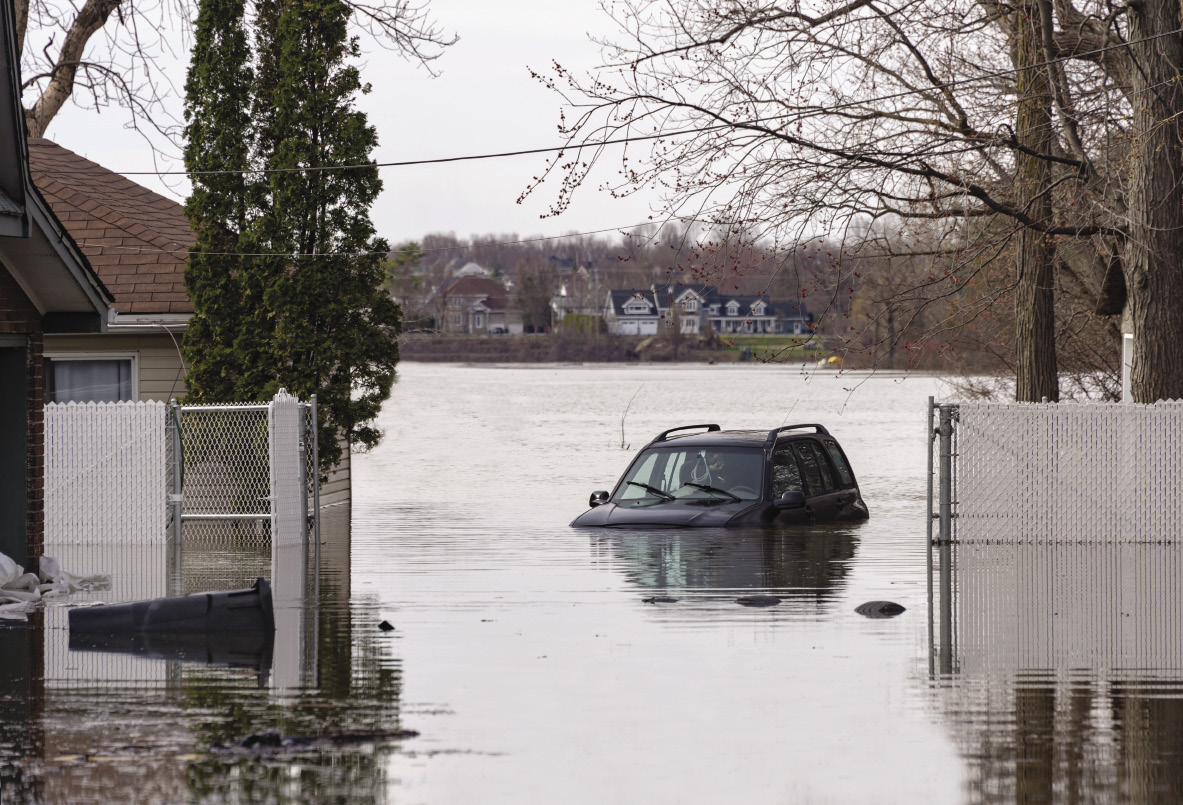
Emergency management planning helps organizations brace for disaster
March 23, 2020
By
Marcel Vander Wier
COVID-19 experience shows employers need to be ready

Quebec endured severe flooding in the spring of 2019. (mbruxelle/Adobe Stock)
Wildfires, floods and blizzards have been wreaking havoc on workplaces across the country in recent years.
Most recently, coronavirus has taken a grip of the world with governments trying to contain the spread of COVID-19 by encouraging social distancing and work-from-home policies.
Additionally, cities and towns across Canada continue to declare climate emergencies, following the lead of the House of Commons, who declared a national emergency in June of last year.
Employers are taking notice, according to Plamen Petkov, vice-president for Ontario and business resources at the Canadian Federation of Independent Business in Toronto.
“There is certainly an increased focus over the last few years on instances where there is more frequent fires, floods, other natural disasters that could be related to climate change,” he says.
“You cannot predict all of these things, but perhaps potentially you could prepare a little bit better in terms of how to respond to a specific incident.”
Sometimes all an employer can do is react, says Petkov, recalling the tornado that ripped through Goderich, Ont., in 2011.
But where preparations are possible, they should be made, he says.
“That adds some predictability in situations where things are not really predictable. You don’t know what kind of natural disaster you will be experiencing.”
Disaster preparedness
In small businesses, responsibilities for disaster preparedness and emergency response typically fall to the business owner, says Petkov.
“It is very difficult — especially for a small business owner — to compile all that information on their own,” he says.
In an effort to assist, CFIB has established a five-point plan to help workplaces deal with natural disasters such as fires, floods and earthquakes.
Steps include:
• assigning responsibility for managing a crisis
• identifying threats to your business
• reducing identified risks, when possible
• preparation of an emergency plan
• practising and testing the plan annually.
Prevention and preparation measures should be communicated to employees in advance when possible, says Petkov, noting that disaster response often becomes an employer’s No. 1 priority “after the fact.”
Business continuity strategies such as enabling staff to work remotely in case of a disaster is worthy of preparatory consideration, as are the effects an incident would have on client and government relationships, he says.
When it comes to climate change, the effect it is having on workers is still a “really new topic,” according to Ariane Adam-Poupart, specialized scientific advisor with Quebec’s public health institute in Montreal — Institut National de Santé Publicque du Quebec (INSPQ).
Climate-change hazards including heat waves, an increase in UV radiation exposure and a bump in extreme climate events are rising in occurrences, she says, noting outdoor workers across sectors can expect to be impacted alongside employers through rising compensation claims for work-related injuries as a result of heat exposure.
Emergency management
Business continuity policy goes a step past typical emergency planning, according to Thushara Jayasooriya, technical OHS specialist at the Canadian Centre for Occupational Health and Safety in Hamilton, Ont.
“It ensures that personnel and assets are protected so that they are able to function quickly in the event of a disaster or an emergency,” she says.
Ensuring an emergency management plan is in place is a requirement for employers, says Jayasooriya.
“Employers must plan for a well-thought-out and well-organized emergency response plan so that they can be ready for any emergency,” she says.
The four elements of an emergency management plan include:
• Prevention: policies and procedures to minimize the occurrence of emergencies
• Preparation: activities and procedures to make sure your organization is ready to effectively respond
• Response: the action to be taken when an emergency occurs
• Recovery: practices to resume to normal business operations.
“In all these situations, communication, training and periodic trials is a key component in the success of a program, because they will help make sure the plan is executed well when the time comes,” says Jayasooriya.
Workplace risks will vary depending on geographic location and sector. Employers should consult with local emergency personnel and insurance agencies to ensure they know what to do in case of a situation, she says.
“It would help broaden the knowledge of both technological and natural hazards.”
Those with an OHS management system are “in a better position than other workplaces,” says Jayasooriya, noting these systems are updated regularly to encompass new environmental issues.
For employers with a system in place, the next best thing to do is follow Edwards Deming’s Plan-Do-Check-Act cycle towards continuous improvement.
“If you follow that approach, then you are covering all the elements of the process,” she says. “It enables the employer to identify and surface any potential issue early and also analyze and identify how it is impacting the workplace. Then they can prepare for mitigation and response plan, and finally monitor and review the process for further improvement.”
Constant documentation is also advised, as it strengthens the review process, according to Jayasooriya.
Employers should be considering climate change as they develop infrastructure and projects, and organize their workforce, says Adam-Poupart.
“To take that into account when we want to plan the work of our workers would be a good thing.”